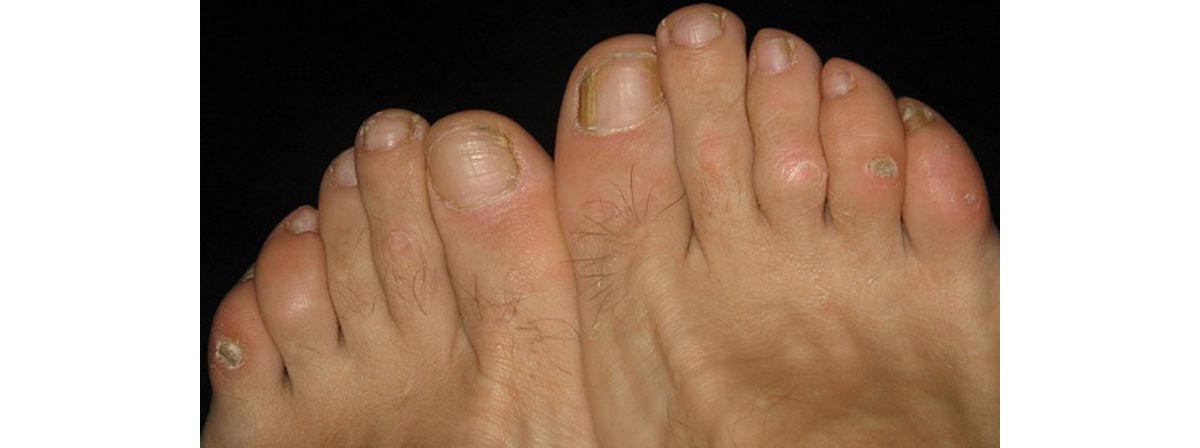Table of Contents
This painful foot complaint is nothing new : they are believed to have been described as early as 300BC by Hippocrates, who was credited as being the ‘father’ of medicine. And the predecessors of modern podiatrists and chiropodists (which is a UK term) were ‘corn cutters’ who toured around their locality, offering relief (with the forerunner of the scalpel) in the streets, markets and even at fairs.
What exactly is a "corn" and what do you need to know about it and how to treat them?

What is a corn?
You may have been lucky enough never to have had one, or if you have, possibly you didn’t recognize it for what it is. What do they look like? Well, they generally appear as a circular patch of hard skin, sometimes with a visible depression or elevation right in the middle of them. However, some can just appear as a small yellowish or white circle (‘seed corns’).
The skin around the corn may be white and moist – particularly when they appear between the toes – or they could be red and inflamed.
This is one of the reasons that they are so notoriously painful as whenever they are pressed that point ‘digs’ in, causing pain.
Where do you get them?
The most common sites for them to appear on the foot are on top of toe joints and on the sole of the foot - particularly over the ball of the foot – although they can occur anywhere on the foot, these are the most common spots. As mentioned, certain types of corn can even appear between the toes, though it's not as common.
What causes them?
If you've had corn before you may have wondered where it came from and how? They are basically caused by friction – which is mainly caused from wearing shoes. The skin of the foot is subject to differing types of pressure and friction such as shear or compression, and this is thought to account for all the different types of corn which can be seen to appear on the foot.
Hard skin (callus) and corns form on the foot directly in response to pressure and friction, specifically in order to protect not only the skin but the underlying structures as well.
Who gets corns?
Many people mistakenly think of them as only affecting older people and there are many jokes about old ladies and their corns. But although they are less common in children than in adults, they can (and do) affect people of any age. No matter your age, you are at risk of getting corns.
- Neale’s Disorders of the Foot. 8th Edition. Published by Churchill Livingstone, Edinburgh, UK
- Photo courtesy of Marionette by Wikimedia Commons : en.wikipedia.org/wiki/File:Corns.jpg
- Photo courtesy of Mike Czyzewski by Flickr : www.flickr.com/photos/21687588@N07/3374504369/
- www.podiatrycare.com.au/conditions-we-treat/corns-and-callus
- www.sorefoot.co.uk/corns.htm


Your thoughts on this